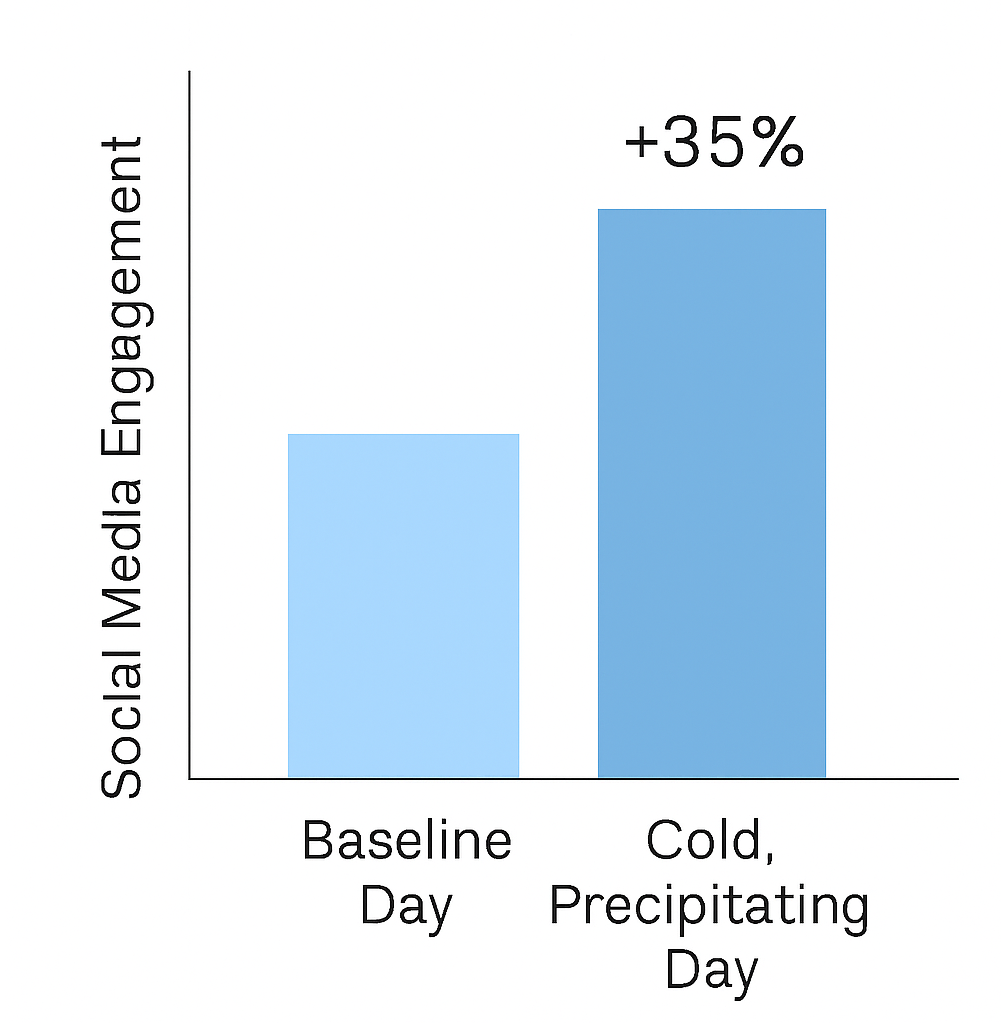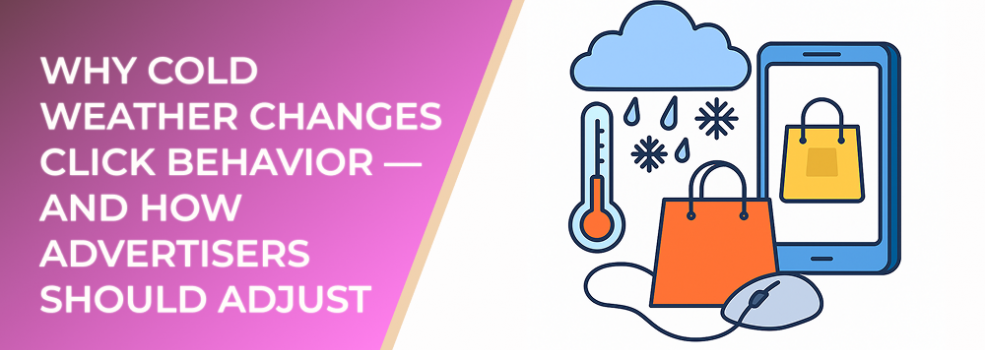This article explores why seasonal temperature drops meaningfully change online behavior and what advertisers can do to stay ahead.
Understanding Seasonal Digital Behavior
As temperatures fall, consumer routines shift. More people stay home, spend longer periods scrolling on mobile devices, and exhibit stronger intent for categories tied to comfort, productivity, and early holiday planning.
Recent data shows that during colder months, overall digital activity increases significantly. According to industry benchmarks, mobile usage can rise by as much as 20% in late fall and winter. Additionally, click-through rates for ecommerce campaigns often grow between 12% and 18% from October through December.
This shift is driven by several behavioral patterns:
-
People spend more time indoors and turn to digital platforms for entertainment, shopping, and planning.
-
Search volume spikes across categories such as apparel, home goods, self-care, and early gifting.
-
Consumers display higher comparative-shopping behavior before converting.
Why Click Behavior Changes in Cold Weather
1. Increased Dwell Time
Colder months lead to longer evening hours at home, increasing dwell time on websites and social feeds. Studies have shown that average session durations can increase by up to 15% in winter. As sessions extend, users become more receptive to ads that match their seasonal needs.
2. Higher Demand for Seasonal Solutions
Search and click behavior often pivot toward warmth, comfort, and productivity. For example, categories like winter apparel, indoor activities, and household conveniences commonly see a surge of up to 25% in click volume.
3. Earlier Holiday Intent

Social media engagement increases ~35% on very cold, precipitating days compared with temperate ones
Colder weather typically coincides with higher purchase intent as people prepare for year-end holidays. Data from the past three years indicates that shoppers begin researching purchases 2 to 3 weeks earlier than in previous seasons. This leads to increased ad engagement even before holiday campaigns fully launch.
How Advertisers Should Adjust
To capitalize on shifting behavior, advertisers can reframe their targeting, messaging, and timing strategies.
1. Align Creatives With Seasonal Mindsets

By 2025 mobile devices are expected to drive nearly three-quarters of e-commerce sales
Cold weather sparks interest in comfort, efficiency, and preparation. Ads that highlight solutions tailored to these needs often see up to 30% higher engagement. Creative assets should reflect seasonal environments or indoor-focused benefits that resonate with user intent.
2. Expand Audiences Before Peak Season
As click behavior accelerates early, brands benefit from expanding prospecting audiences ahead of major seasonal events. Broadening inputs tied to browsing history, category affinities, and lookalike signals can help capture rising interest.
3. Shift Budgets Toward High-Intent Windows
Because users compare more options before converting, retargeting strategies become even more valuable. Advertisers who reallocate 10–20% more budget to retargeting during colder months typically experience stronger ROAS and shorter conversion paths.
4. Test Time-of-Day Delivery
Data shows that engagement during colder months tends to peak in early mornings and evenings. Running A/B tests on delivery windows can help uncover high-intent pockets where click-through rates naturally rise.
Final Thoughts
Cold weather brings unique changes to digital behavior that advertisers can use to their advantage. By adjusting creative strategy, timing, and audience structure, brands can stay aligned with seasonal intent and capture stronger, more consistent engagement.

